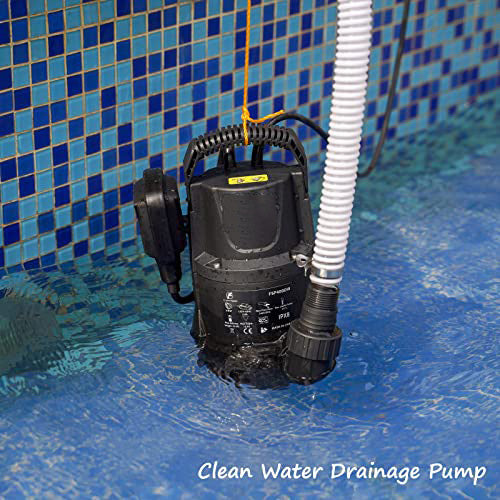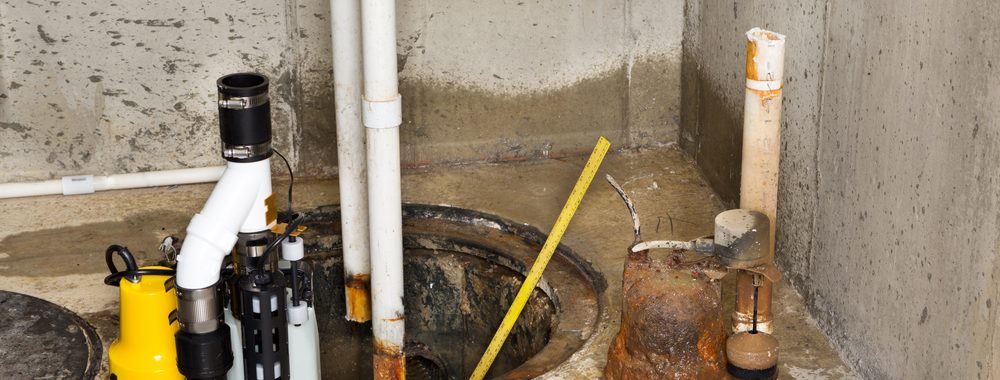Straightforward Instructions for Taking Care of a Sump Pump
Straightforward Instructions for Taking Care of a Sump Pump
Blog Article
Have you been trying to locate ideas concerning Steps to Cleaning Your Sump Pump Properly?

Sump pumps are vital components in several homes, particularly in areas prone to flooding or excessive wetness. They aid avoid water damage by efficiently removing excess water from cellars or crawl spaces. However, like any other appliance, sump pumps require routine upkeep to ensure they function efficiently when required one of the most. Cleaning your sump pump is an important part of its maintenance, and understanding exactly how to do it properly can conserve you from costly fixings and possible calamities.
Introduction
Keeping a tidy sump pump is vital for its correct performance and longevity. Overlooking this vital task can lead to obstructions, malfunctions, and inevitably, water damages to your residential property. Therefore, learning just how to clean up a sump pump is crucial for property owners who count on these devices to keep their basements dry and secured.
Indicators of a Dirty Sump Pump
Understanding when your sump pump requires cleansing is critical for avoiding potential breakdowns. Some typical indicators that suggest a filthy sump pump include weird noises throughout operation, decreased water circulation, and visible particles in the pit. If you observe any of these signs and symptoms, it's necessary to cleanse your sump pump promptly to avoid any type of further problems.
Planning for Cleaning
Prior to you start cleansing your sump pump, it's essential to take some safety precautions. Begin by shutting down the power to the pump to avoid any electric mishaps. In addition, put on appropriate protective gear, such as gloves and goggles, to safeguard yourself from dirt, debris, and prospective pathogens.
Comprehending the Sump Pump
Prior to diving right into the cleaning process, it's important to have a fundamental understanding of how a sump pump works. Usually installed in a pit or container below the basement flooring, a sump pump includes several essential components, consisting of a pump, a float switch, and a discharge pipe. When water gathers in the pit, the float switch triggers the pump, which after that pumps the water out through the discharge pipe, far from the structure's foundation.
Step-by-step Guide to Cleaning a Sump Pump
Turning off the Power
Begin by detaching the power supply to the sump pump to prevent any kind of mishaps while cleaning.
Looking For Proper Functioning
Prior to re-installing the pump, perform a fast examination to guarantee that the float switch turns on the pump correctly. Put some water right into the sump pit and observe the pump's procedure. If everything is working properly, you can reconstruct the pump and reconnect the power supply.
Removing Debris and Dirt
Utilize a pail or a scoop to remove any kind of visible debris, dust, or sediment from the sump pit. Dispose of the debris effectively to prevent it from obstructing the pump or the discharge pipeline.
Cleansing the Pump and Drift Switch Over
When the pit is clear of debris, meticulously eliminate the pump from the pit. Evaluate the pump and the float switch for any type of signs of damage or wear. Utilize a soft brush or towel to clean up the surfaces and get rid of any kind of built up grime.
Purging the System
After cleansing the pump and float switch, purge the sump pit with clean water to eliminate any continuing to be dust or debris. This will certainly help make certain that the pump runs smoothly and effectively.
Upkeep Tips to Maintain Your Sump Pump Clean
Along with routine cleansing, there are several upkeep ideas you can follow to maintain your sump pump in optimal problem:
Conclusion
Cleansing your sump pump is a crucial facet of its upkeep and ensures that it operates properly when you need it one of the most. By following the actions detailed in this guide and including routine maintenance into your routine, you can expand the lifespan of your sump pump and safeguard your home from water damages.
6 STEPS ON HOW TO CLEAN A SUMP PUMP PROPERLY
UNDERSTANDING SUMP PUMPS
Your sump pump plays a crucial role in protecting your home by managing and removing excess water. It primarily functions as a “shield”, guarding your basement against the damaging effects of water accumulation. The pump is housed in a sump pit in the lowest part of your basement, and its job is to pump out any water that collects there.
During heavy rainfalls or when snow melts rapidly, water can infiltrate your basement, posing potential risks like flooding, structural damage, and harmful mold growth. Here, the sump pump springs into action, pumping out the intruding water and directing it away from your home.
SAFETY FIRST
Before cleaning, remember to prioritize safety. Disconnect the sump pump from the power source to prevent any accidental electric shocks. Also, wear sturdy gloves to protect your hands from any sharp or dirty components within the pump.
REMOVE THE SUMP PUMP
After ensuring your safety, the next step is to remove the sump pump from its pit. Doing this might require careful maneuvering as you don’t want to damage any pump components. Once removed, clean the sump pit to remove any accumulated debris or sludge.
INSPECT THE PUMP
Inspect the pump for any visible signs of wear or damage. Check the power cord, float switch, and impeller housing. If any components look worn out or damaged, consider replacing them to ensure optimal performance.
CLEAN THE PUMP
Thoroughly clean the pump with warm, soapy water. Make sure to rid it of any dirt, gravel, or other debris that might impede its performance. You can use a toothbrush to clean the small, hard-to-reach parts of the pump.
REINSTALL THE SUMP PUMP
Reinstall the pump into the sump pit Make sure it’s positioned correctly to remove the water effectively Once it’s back in place, reconnect it to the power source TEST THE PUMP
Finally, pour some water into the pit to ensure the pump works correctly. It should start automatically and begin pumping out the water; if it doesn’t, check the power source and the positioning of the pump.
Remember, while cleaning your sump pump is an essential part of home maintenance, hiring a professional plumber for a thorough inspection and cleaning at least once a year is also important. This will ensure that your pump is in optimal condition, ready to protect your home from potential water damage.
BEST PRACTICES FOR CLEANING SUMP PUMP DISCHARGE PIPES
Regular Inspection: Regularly inspect your discharge pipes, especially during heavy rainfall or snowmelt periods. Look for any signs of blockage or damage. Early detection of problems can prevent serious issues down the line. Periodic Cleaning: Over time, sediment and debris can accumulate in the discharge pipes, impeding the flow of water. Regular cleaning helps keep the pipes clear and functioning efficiently. You can use a high-pressure water jet to effectively clean the pipes. Insulation During Winter: In colder climates, discharge pipes can freeze, blocking the outflow of water. Protect your discharge pipes from freezing temperatures by insulating them with foam pipe insulation. This will ensure the sump pump can continue to discharge water even in freezing conditions. Proper Positioning: The discharge pipe should be positioned to direct water away from your home’s foundation. Improper positioning can lead to water seeping back into the basement. Ensure the pipe is long enough and angled correctly. Installation of a Check Valve: A check valve prevents water from flowing back into your sump pit after the pump has pushed it out. Installing a check valve helps maintain the efficiency of your sump pump and reduces the risk of flooding. Minimize Pipe Turns: Every curve or turn in the discharge pipe can decrease the efficiency of water flow. By minimizing turns and bends in your discharge pipe, you can increase the efficiency of your sump pump. https://www.fullspeedplumbing.com/how-to-clean-a-sump-pump-properly9999/

As an avid person who reads on Steps to Cleaning Your Sump Pump Properly, I thought sharing that excerpt was a great idea. For those who liked our blog entry if you please remember to pass it around. Many thanks for taking the time to read it.
Click Here Report this page